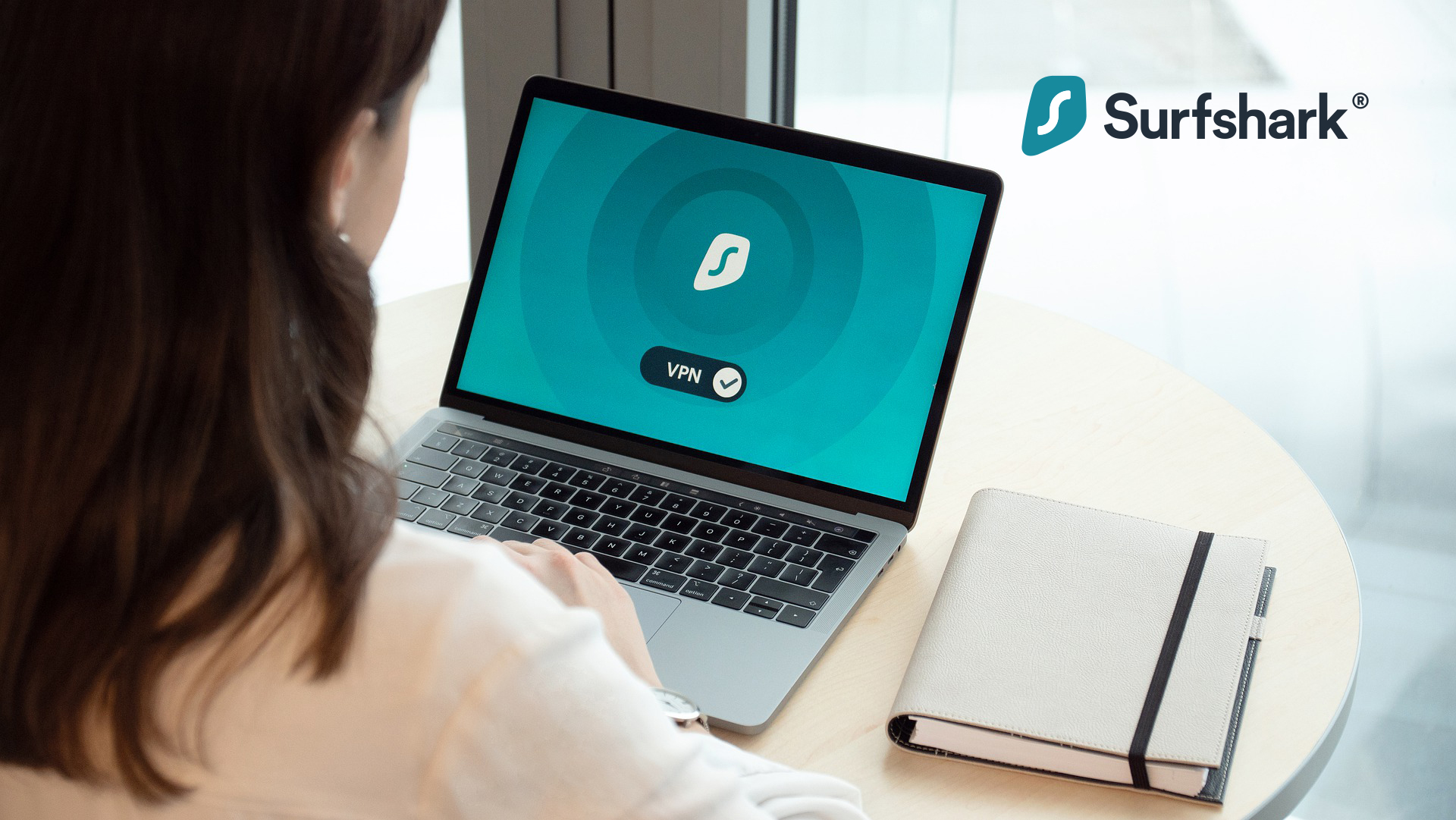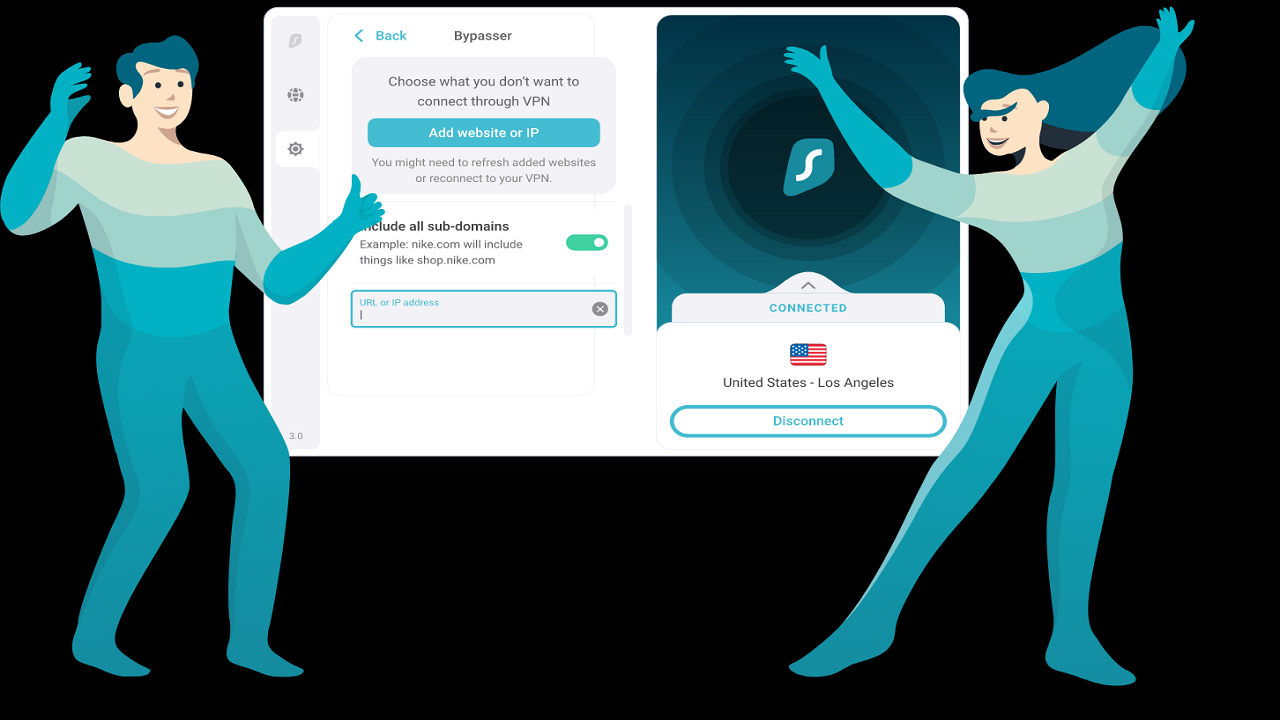Surfshark Bypasser: what it is and when you should use it
Customize your VPN protection in just a couple of clicks.

A VPN is a fantastic tool to keep your personal information private, hide your real location and encrypt your data. However, this layer of protection can sometimes hinder you from carrying on some activities smoothly.
When your phone is connected to one of the best VPN services, you might not be able to access your online banking app for example. And this can happen with various applications, websites or wireless devices like your home printer.
To save you the hassle and risk of switching on and off your security software, Surfshark - one of the cheapest VPN providers around - has developed its Surfshark Bypasser feature. This allows you to customize your VPN protection by excluding or including which data you want to secure inside the encryption tunnel.
How? Let's have a closer look at what Surfshark Bypasser is, how it works and when you should use it.
What is Surfshark Bypasser?
Surfshark Bypasser is the provider's very own split tunneling technology.
Every time you connect to your security software, this reroutes all the traffic to its VPN tunnel. Here, it uses various encryption tactics to safeguard your data and anonymity while providing you with a fresh IP address. The latter depends on which servers are you opting for, among the 3,200+ available.
Enabling Surfshark Bypasser, you will be the one in charge to decide which traffic to direct through your VPN encryption and which one to leave under your usual internet connection.
Are you a pro? Subscribe to our newsletter
Sign up to the TechRadar Pro newsletter to get all the top news, opinion, features and guidance your business needs to succeed!
When should you use Surfshark Bypasser?
Surfshark Bypasser can come in handy for several purposes. As we mentioned before, some apps, services and websites may not work properly unless you turn off your VPN. Banking sites and business networks might require your actual location to work. Also your wireless home devices will need your right IP address to establish a connection.
An active streaming VPN will change the content you can watch on sites like Netflix, Amazon Prime and Disney+. Although this is great for bypassing catalogs' geo-restrictions, you will need to exclude these sites from your VPN traffic to keep streaming locally.
The same principle applies in case you want to keep your real IP address to access some local news online outlets, but you need a secure and foreign location to protect your data when browsing other sites.

A VPN connection can slow down your connection at times, too. You can then enable Surfshark Bypasser to allow data-heavy apps that do not require encryption to run at your normal speed.
Instead of excluding what doesn't need protection, you can even have more control on your sensitive information instead.
It is worth a reminder that the apps and websites on that you will apply the split tunneling option (on the Surfshark app this comes under the name Bypass VPN), will no longer benefit from the VPN encryption. This means that malicious actors and your ISP will be able to snoop on your activities and access your data. We recommend always keeping your sensitive and personal information secure inside the VPN tunnel.
How to set up Surfshark Bypasser
Now that you know everything about Surfshark Bypasser, learn how to customize your service's protection following this step-by-step guide:
- Login to your Surfshark App - it is available for almost every device, including macOS, Windows, Linux, iOS and Android.
- Head on the settings - then click Bypasser.
- Customize your protection - Add the apps, websites and IP addresses you want to exclude (clicking the Bypass VPN option and taking your pick) or include (toggling the Route via VPN button and browsing your choices) from your VPN protection.
What about other providers?
Surfshark is not the only VPN giving this option to its users. Other providers offering a split tunneling feature include ExpressVPN, NordVPN, Private Internet Access, CyberGhost, IPVanish and Hotspot Shield.
However, every service has very different levels of support and customization.
For example, IPVanish only has split tunneling in its Android and Amazon Fire TV VPN apps. ExpressVPN has it everywhere but just for apps or devices, while NordVPN and Hotspot Shield works on both an app and URL-based split.
As a rule of thumb, you will always have to head on your VPN settings in order to enable split tunneling and customize your choices.

Chiara is a multimedia journalist committed to covering stories to help promote the rights and denounce the abuses of the digital side of life – wherever cybersecurity, markets, and politics tangle up. She believes an open, uncensored, and private internet is a basic human need and wants to use her knowledge of VPNs to help readers take back control. She writes news, interviews, and analysis on data privacy, online censorship, digital rights, tech policies, and security software, with a special focus on VPNs, for TechRadar and TechRadar Pro. Got a story, tip-off, or something tech-interesting to say? Reach out to chiara.castro@futurenet.com